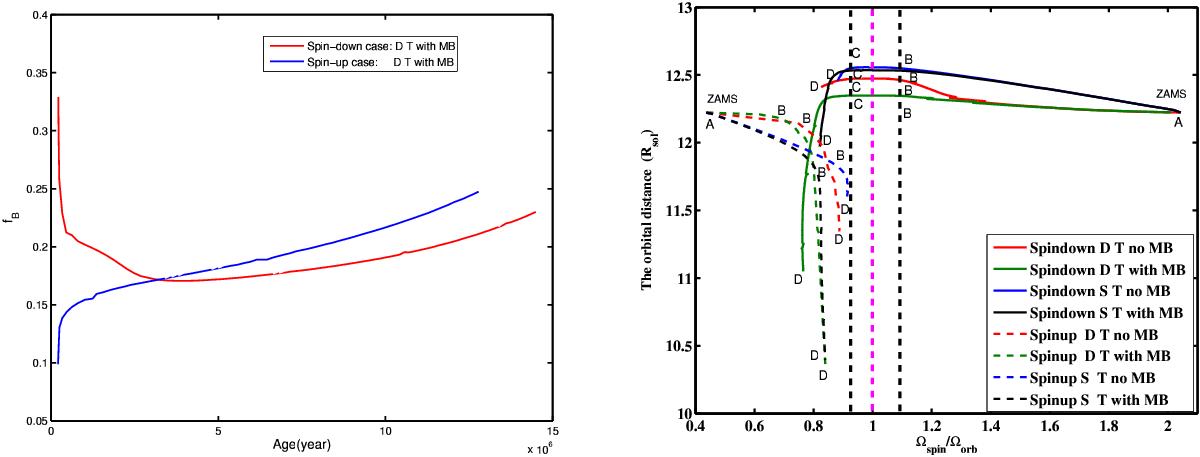Fig. 3

Left: evolution of the ratio, fB between Ṁ1,wind and the mass-loss rate without a magnetic field Ṁ1,wind(B = 0) for spin-down and spin-up cases with differential (D) rotation, tidal forces (T) and wind magnetic braking (MB). Right: evolution of the separation, expressed in units of solar radii, for spin-down and spin-up cases with both solid (S) body and differential (D) rotation as a function of the spin angular velocity of the primary normalized to the orbital angular velocity. Point A denotes the ZAMS. Tidal torques dominate the orbital evolution from point A to point B in both spin-down and spin-up cases (τtides<τmb). At point B, one has that τtides = τmb The loss of mass due to stellar winds governs the orbital evolution from point B to point C in spin-down cases (τtides>τmb). The wind torques (or magnetic torques) are counteracted by tidal torques from point C to D in spin-down cases and from point B to D in spin-up cases. Point D denotes the beginning of Roche lobe overflow. The red and the green curves show the cases where the redistribution of angular momentum inside the star is due to shear instabilities and meridional currents (cases noted D in the box). The blue and the black curves are cases of solid body rotation (cases noted S in the box) Rsun is the solar radius. The dashed vertical lines correspond to perfect synchronization (Ω = ωorb, magenta line) and to 90% and 110% of the orbital velocity (black lines left and right of magenta line, respectively).
Current usage metrics show cumulative count of Article Views (full-text article views including HTML views, PDF and ePub downloads, according to the available data) and Abstracts Views on Vision4Press platform.
Data correspond to usage on the plateform after 2015. The current usage metrics is available 48-96 hours after online publication and is updated daily on week days.
Initial download of the metrics may take a while.




